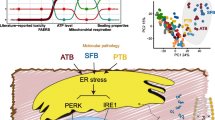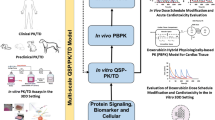Abstract
Tyrosine kinase inhibitors (TKIs) are targeted therapies rapidly becoming favored over conventional cytotoxic chemotherapeutics. Our study investigates two FDA approved TKIs, Dasatinib; indicated for Imatinib-refractory chronic myeloid leukemia, and Sorafenib; indicated for hepatocellular carcinoma and advanced renal cell carcinoma. Limited but crucial evidence suggests that these agents can have cardiotoxic side effects ranging from hypertension to heart failure. A greater understanding of the underlying mechanisms of this cardiotoxicity are needed as concerns grow and the capacity to anticipate them is lacking. The objective of this study was to explore the mitochondrial-mediated cardiotoxic mechanisms of the two selected TKIs. This was achieved experimentally using immortalized human cardiomyocytes, AC16 cells, to investigate dose- and time-dependent cell killing, along with measurements of temporal changes in key signaling proteins involved in the intrinsic apoptotic and autophagy pathways upon exposure to these agents. Quantitative systems pharmacology (QSP) models were developed to capture the toxicological response in AC16 cells using protein dynamic data. The developed QSP models captured well all the various trends in protein signaling and cellular responses with good precision on the parameter estimates, and were successfully qualified using external data sets. An interplay between the apoptotic and autophagic pathways was identified to play a major role in determining toxicity associated with the investigated TKIs. The established modeling platform showed utility in elucidating the mechanisms of cardiotoxicity of Sorafenib and Dasatinib. It may be useful for other small molecule targeted therapies demonstrating cardiac toxicities, and may aid in informing alternate dosing strategies to alleviate cardiotoxicity associated with these therapies.








Similar content being viewed by others
Abbreviations
- Akt:
-
AKT8 virus oncogene cellular homolog
- ASK1:
-
Apoptosis signal-regulating kinase 1
- AT2:
-
Angiotensin II receptor type 2
- ATP:
-
Adenosine triphosphate
- BAD:
-
Bcl-2-associated death promoter
- Bcl-2:
-
B-cell lymphoma 2 protein
- Bcl-xL:
-
B-cell lymphoma-extra large protein
- Bcr-Abl:
-
Fusion protein encoded by the Philadelphia chromosome
- c-Kit:
-
Stem cell growth factor receptor
- DMSO:
-
Dimethyl sulfoxide
- FBS:
-
Fetal bovine serum
- GAPDH:
-
Glyceraldehyde 3-phosphate dehydrogenase
- JNK:
-
Jun N-terminal kinase
- LC3:
-
Microtubule-associated protein 1 light chain 3
- MST2:
-
Serine/threonine kinase 3 (STK3)
- mTORC1:
-
Mammalian target of rapamycin complex 1
- PDGFR:
-
Platelet derived growth factor receptor
- phospho-Akt/pAkt:
-
Phosphorylated Akt
- phospho-BAD/pBAD:
-
Phosphorylated BAD
- Phospho-Bcl2/pBcl2:
-
Phosphorylated Bcl-2
- phospho-JNK/pJNK:
-
Phosphorylated JNK
- PI3K:
-
Phosphoinositide 3 kinase
- QSP:
-
Quantitative systems pharmacology
- RAF:
-
Rapidly accelerated fibrosarcoma kinase protein
- RAF1:
-
v-raf1 murine leukemia viral oncogene homolog 1
- ROS:
-
Reactive oxygen species
- S6K:
-
Ribosomal protein S6 kinase beta-1
- Src:
-
Rous sarcoma oncogene cellular homolog tyrosine kinase protein
- TKI:
-
Tyrosine kinase inhibitor
- VEGFR:
-
Vascular endothelial growth factor receptor
References
Hasinoff BB, Patel D (2010) The lack of target specificity of small molecule anticancer kinase inhibitors is correlated with their ability to damage myocytes in vitro. Toxicol Appl Pharmacol 249(2):132–139
Hasinoff BB (2010) The cardiotoxicity and myocyte damage caused by small molecule anticancer tyrosine kinase inhibitors is correlated with lack of target specificity. Toxicol Appl Pharmacol 244(2):190–195
Brave M et al (2008) Sprycel for chronic myeloid leukemia and Philadelphia chromosome-positive acute lymphoblastic leukemia resistant to or intolerant of imatinib mesylate. Clin Cancer Res 14(2):352–359
Strumberg D et al (2007) Safety, pharmacokinetics, and preliminary antitumor activity of sorafenib: a review of four phase I trials in patients with advanced refractory solid tumors. Oncologist 12(4):426–437
Escudier B et al (2007) Sorafenib in advanced clear-cell renal-cell carcinoma. N Engl J Med 356(2):125–134
Force T, Krause DS, Van Etten RA (2007) Molecular mechanisms of cardiotoxicity of tyrosine kinase inhibition. Nat Rev Cancer 7(5):332–344
Chou MT, Wang J, Fujita DJ (2002) Src kinase becomes preferentially associated with the VEGFR, KDR/Flk-1, following VEGF stimulation of vascular endothelial cells. BMC Biochem 3:32
Altarche-Xifro W et al (2009) Cardiac c-kit + AT2 + cell population is increased in response to ischemic injury and supports cardiomyocyte performance. Stem Cells 27(10):2488–2497
Will Y et al (2008) Effect of the multitargeted tyrosine kinase inhibitors imatinib, dasatinib, sunitinib, and sorafenib on mitochondrial function in isolated rat heart mitochondria and H9c2 cells. Toxicol Sci 106(1):153–161
French KJ et al (2010) Differences in effects on myocardium and mitochondria by angiogenic inhibitors suggest separate mechanisms of cardiotoxicity. Toxicol Pathol 38(5):691–702
Prieto-Dominguez N et al (2016) Modulation of autophagy by sorafenib: effects on treatment response. Front Pharmacol 7:151
Heqing Y et al (2016) The role and mechanism of autophagy in sorafenib targeted cancer therapy. Crit Rev Oncol Hematol 100:137–140
Le XF et al (2010) Dasatinib induces autophagic cell death in human ovarian cancer. Cancer 116(21):4980–4990
Milano V et al (2009) Dasatinib-induced autophagy is enhanced in combination with temozolomide in glioma. Mol Cancer Ther 8(2):394–406
Yang X et al (2015) Autophagy protects against dasatinib-induced hepatotoxicity via p38 signaling. Oncotarget 6(8):6203–6217
Klionsky DJ, Emr SD (2000) Autophagy as a regulated pathway of cellular degradation. Science 290(5497):1717–1721
Dewaele M, Maes H, Agostinis P (2010) ROS-mediated mechanisms of autophagy stimulation and their relevance in cancer therapy. Autophagy 6(7):838–854
Nakai A et al (2007) The role of autophagy in cardiomyocytes in the basal state and in response to hemodynamic stress. Nat Med 13(5):619–624
Nishida K et al (2009) The role of autophagy in the heart. Cell Death Differ 16(1):31–38
Knaapen MW et al (2001) Apoptotic versus autophagic cell death in heart failure. Cardiovasc Res 51(2):304–312
Kostin S et al (2003) Myocytes die by multiple mechanisms in failing human hearts. Circ Res 92(7):715–724
Davidson MM et al (2005) Novel cell lines derived from adult human ventricular cardiomyocytes. J Mol Cell Cardiol 39(1):133–147
Holford NH, Sheiner LB (1982) Kinetics of pharmacologic response. Pharmacol Ther 16(2):143–166
Sussman MA et al (2011) Myocardial AKT: the omnipresent nexus. Physiol Rev 91(3):1023–1070
Datta SR et al (1997) Akt phosphorylation of BAD couples survival signals to the cell-intrinsic death machinery. Cell 91(2):231–241
Yang E et al (1995) Bad, a heterodimeric partner for Bcl-XL and Bcl-2, displaces Bax and promotes cell death. Cell 80(2):285–291
Letai A et al (2002) Distinct BH3 domains either sensitize or activate mitochondrial apoptosis, serving as prototype cancer therapeutics. Cancer Cell 2(3):183–192
Ito T et al (1997) Bcl-2 phosphorylation required for anti-apoptosis function. J Biol Chem 272(18):11671–11673
Ruvolo PP, Deng X, May WS (2001) Phosphorylation of Bcl2 and regulation of apoptosis. Leukemia 15(4):515–522
Wang RC et al (2012) Akt-mediated regulation of autophagy and tumorigenesis through Beclin 1 phosphorylation. Science 338(6109):956–959
Yu C et al (2004) JNK suppresses apoptosis via phosphorylation of the proapoptotic Bcl-2 family protein BAD. Mol Cell 13(3):329–340
Force T, Kolaja KL (2011) Cardiotoxicity of kinase inhibitors: the prediction and translation of preclinical models to clinical outcomes. Nat Rev Drug Discov 10(2):111–126
Narula J et al (1999) Apoptosis in heart failure: release of cytochrome c from mitochondria and activation of caspase-3 in human cardiomyopathy. Proc Natl Acad Sci USA 96(14):8144–8149
Zha J et al (1996) Serine phosphorylation of death agonist BAD in response to survival factor results in binding to 14-3-3 not BCL-X(L). Cell 87(4):619–628
Tran TH et al (2007) Jun kinase delays caspase-9 activation by interaction with the apoptosome. J Biol Chem 282(28):20340–20350
Bernt KM, Hunger SP (2014) Current concepts in pediatric Philadelphia chromosome-positive acute lymphoblastic leukemia. Front Oncol 4:54
Davis RJ (2000) Signal transduction by the JNK group of MAP kinases. Cell 103(2):239–252
Dutta D et al (2013) Upregulated autophagy protects cardiomyocytes from oxidative stress-induced toxicity. Autophagy 9(3):328–344
Kuwahara K et al (2000) Cardiotrophin-1 phosphorylates akt and BAD, and prolongs cell survival via a PI3K-dependent pathway in cardiac myocytes. J Mol Cell Cardiol 32(8):1385–1394
Matsui T, Rosenzweig A (2005) Convergent signal transduction pathways controlling cardiomyocyte survival and function: the role of PI 3-kinase and Akt. J Mol Cell Cardiol 38(1):63–71
Mellor HR et al (2011) Cardiotoxicity associated with targeting kinase pathways in cancer. Toxicol Sci 120(1):14–32
Minden A et al (1994) Differential activation of ERK and JNK mitogen-activated protein kinases by Raf-1 and MEKK. Science 266(5191):1719–1723
Muslin AJ (2011) Akt2: a critical regulator of cardiomyocyte survival and metabolism. Pediatr Cardiol 32(3):317–322
Oltvai ZN, Milliman CL, Korsmeyer SJ (1993) Bcl-2 heterodimerizes in vivo with a conserved homolog, Bax, that accelerates programmed cell death. Cell 74(4):609–619
Pan C et al (2009) Global effects of kinase inhibitors on signaling networks revealed by quantitative phosphoproteomics. Mol Cell Proteom 8(12):2796–2808
Parcellier A et al (2008) PKB and the mitochondria: AKTing on apoptosis. Cell Signal 20(1):21–30
Walko CM, Grande C (2014) Management of common adverse events in patients treated with sorafenib: nurse and pharmacist perspective. Semin Oncol 41(Suppl 2):S17–S28
Xia P, Liu Y, Cheng Z (2016) Signaling pathways in cardiac myocyte apoptosis. Biomed Res Int 2016:9583268
Mager DE, Jusko WJ (2001) Pharmacodynamic modeling of time-dependent transduction systems. Clin Pharmacol Ther 70(3):210–216
Sharma A, Ebling WF, Jusko WJ (1998) Precursor-dependent indirect pharmacodynamic response model for tolerance and rebound phenomena. J Pharm Sci 87(12):1577–1584
Chudasama VL et al (2015) Logic-based and cellular pharmacodynamic modeling of bortezomib responses in U266 human myeloma cells. J Pharmacol Exp Ther 354(3):448–458
Czabotar PE et al (2014) Control of apoptosis by the BCL-2 protein family: implications for physiology and therapy. Nat Rev Mol Cell Biol 15(1):49–63
Tanida I, Ueno T, Kominami E (2008) LC3 and Autophagy. Methods Mol Biol 445:77–88
Rubinstein AD, Kimchi A (2012) Life in the balance—a mechanistic view of the crosstalk between autophagy and apoptosis. J Cell Sci 125(Pt 22):5259–5268
Lobo ED, Balthasar JP (2002) Pharmacodynamic modeling of chemotherapeutic effects: application of a transit compartment model to characterize methotrexate effects in vitro. AAPS PharmSci 4(4):E42
Liu J, Lin A (2005) Role of JNK activation in apoptosis: a double-edged sword. Cell Res 15(1):36–42
Andreka P et al (2001) Cytoprotection by Jun kinase during nitric oxide-induced cardiac myocyte apoptosis. Circ Res 88(3):305–312
González A et al (2003) Cardiomyocyte apoptosis in hypertensive cardiomyopathy. Cardiovasc Res 59(3):549–562
Kunapuli S, Rosanio S, Schwarz ER (2006) “How do cardiomyocytes die?” apoptosis and autophagic cell death in cardiac myocytes. J Card Fail 12(5):381–391
Dayneka NL, Garg V, Jusko WJ (1993) Comparison of four basic models of indirect pharmacodynamic responses. J Pharmacokinet Biopharm 21(4):457–478
Kabeya Y et al (2000) LC3, a mammalian homologue of yeast Apg8p, is localized in autophagosome membranes after processing. EMBO J 19(21):5720–5728
Chiong M et al (2011) Cardiomyocyte death: mechanisms and translational implications. Cell Death Dis 2:e244
Author information
Authors and Affiliations
Corresponding author
Ethics declarations
Conflict of interest
The authors declare that there is no conflict of interest.
Rights and permissions
About this article
Cite this article
Vaidya, T., Kamta, J., Chaar, M. et al. Systems pharmacological analysis of mitochondrial cardiotoxicity induced by selected tyrosine kinase inhibitors. J Pharmacokinet Pharmacodyn 45, 401–418 (2018). https://doi.org/10.1007/s10928-018-9578-9
Received:
Accepted:
Published:
Issue Date:
DOI: https://doi.org/10.1007/s10928-018-9578-9




